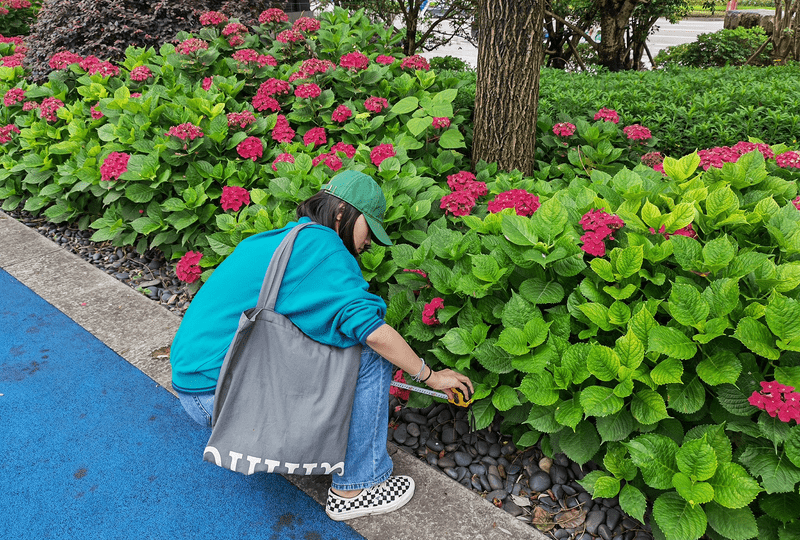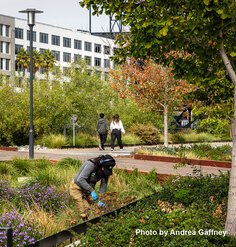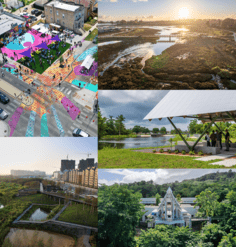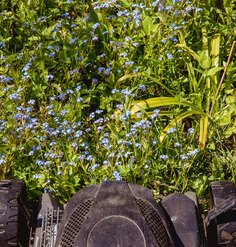CSI: Assessing Transformation on the Suining City Waterfront

Along a two-mile stretch of waterfront in Suining City, Sichuan Province, China, a barren, concrete bulkhead has been transformed into a thriving urban park. Thousands of visitors to Suining South Riverfront Park have taken advantage of the site’s expansive network of elevated walkways, overlooks, and other features since it opened to the public in 2020. It’s a 117-acre ecological oasis adjacent to a bustling city.
In August, a team from Purdue University and design firm ECOLAND Planning and Design Corp. wrapped up its research on Suining South Riverfront Park as part of the Landscape Architecture Foundation’s Case Study Investigation (CSI) program. Working with partners on-site, the team worked to quantify the environmental, social, and economic benefits of the park.
“This is a very ecologically-driven project, but at the same time, I see a lot of social value coming out of the park and economic benefits to the city,” said Yiwei Huang, Purdue’s CSI Research Fellow.
Previously, the bulkhead was largely devoid of vegetation and rarely saw visitors. It was built to protect the city from the Fujiang River below and was separated from the rest of the city by a busy street with few safe crossings. Then, in 2017, local leaders commissioned landscape architects to design a park on the site.
Designers were able to incorporate the bulkhead into the new park and retain its functionality – so it still protects the city from flooding – while concealing it behind landscaped terraces. The design also includes numerous riparian and wetland habitats, an enhanced stormwater management and water cleansing system, new public spaces, and improved access.
These days, the park is bustling with walkers, joggers, cyclists and other visitors. On average, approximately 1,200 people visit every Saturday during the summer. Of the surveyed visitors, 98% reported an improved perception of the aesthetic quality of the riverfront. At least 30 cultural or recreational activities were observed at the site as well.
“We did a survey of local residents, and they all believed the park has really transformed the city,” Yiwei said. “It has become a designated point for city dwellers and visitors to use for outdoor events, recreation activities, and daily enjoyment."

Along with the social benefits, the park has delivered significant environmental benefits, including increased water storage capacity and ecological resilience from an intricate system of wetlands, islands, and lagoons. In addition, a series of stormwater management techniques were retrofitted in hardscape areas to reduce runoff. There were temperature-reduction and noise-reduction benefits as well, Yiwei said.
Nearly 50,000 plants representing 101 species – 71% of which are native – were introduced to the site, along with 11 acres of new wetland habitat. The Purdue team determined plant biodiversity increased five-fold in wetland areas.
On the economic side, property values have increased around the park since it opened, Yiwei said. The site also draws visitors to the area – many of whom spend money in nearby local businesses – and it’s adjacent to the city’s planned urban growth district.
Reflecting on the team’s research, Yiwei noted the park has at least 18 benefits for multiple generations of visitors. It’s especially beneficial to those without ready access to recreation elsewhere. And while the CSI process has come to an end for the Purdue team, Yiwei’s efforts won’t stop there. She said she wants to become an ambassador for the CSI program and the Landscape Performance Series.
“I feel like landscape performance is a great way to demonstrate the benefits of a project, and it’s very educational for the public,” Yiwei said. “To integrate landscape performance is a way to educate people and to encourage people to protect our planet and improve our parks.”
The team’s full Case Study Brief, with quantified environmental, social, and economic benefits, will be posted later this year at LandscapePerformance.org.











